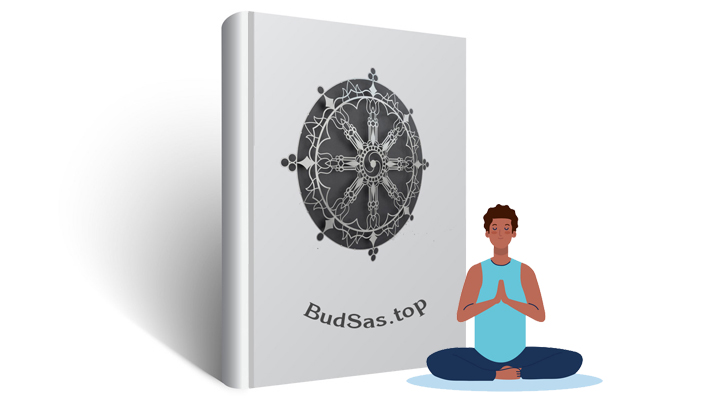Vinaya Piṭaka, (Pāli and Sanskrit: “Basket of Discipline”), the oldest and smallest of the three sections of the Buddhist canonical Tipiṭaka (“Triple Basket”), regulates monastic life and the daily affairs of monks and nuns according to rules attributed to the Buddha. It varies less from school to school than does either the Sutta (discourses of the Buddha and his disciples) or Abhidhamma (scholastic) sections of the canon, and the rules themselves are basically the same even for Mahāyāna schools, although some of the latter greatly extended the accompanying narrative and commentarial material.
CLICK HERE TO DOWNLOAD FREE
Suttavibhaṅga | Phân tích Giới bổn
Suttavibhanga (-vibhaṅga, Pali for “rule analysis”) is the first book of the Theravadin Vinaya Pitaka. It is a commentary on the community rules (Patimokkha). Suttavibhanga, an exposition of the monastic rules (pātimokkha, q.v.) and the disciplinary actions prescribed for each offense, arranged according to severity—from transgressions requiring expulsion from the order to those needing only to be confessed—plus minor rules of conduct. It is divided into two parts, covering the rules for monks and nuns, respectively.
Phân tích giới bổn là bộ đầu tiên của Giới luật Phật giáo thuộc Phật giáo nguyên thủy. Phân tích giới bổn có nội dung là bình luận về các nguyên tắc của người tu Phật tại gia với cộng đồng, là hình thức kỷ luật dành cho mỗi tội, được sắp xếp theo mức độ nghiêm trọng, từ tội nặng trục suất khỏi tăng đoàn cho đến tội nhẹ chỉ cần nhận đã vi phạm. Phân tích giới bổn được chia thành 2 phần: dành cho tăng và dành cho ni
Mahāvibhaṅga | Phân tích giới Tỳ Kheo
Chương Verañja (Verañjakaṇḍaṃ)
I. Chương Pārājika thứ nhất (Paṭhamapārājikakaṇḍaṃ): Tội thực hiện việc đôi lứa
II. Chương Pārājika thứ nhì (Dutiyapārājikakaṇḍaṃ): Tội trộm cắp
III. Chương Pārājika thứ ba (Tatiyapārājikakaṇḍaṃ): Tội giết người
IV. Chương Pārājika thứ tư (Catutthapārājikakaṇḍaṃ): Tội khoe pháp thượng nhân không thực chứng
V. Chương Mười ba pháp (Terasakaṇḍaṃ)
VI. Chương Bất Định (Aniyatakaṇḍaṃ)
VII. CHƯƠNG ƯNG XẢ ĐỐI TRỊ (Nissaggiyakaṇḍaṃ)
VIII. CHƯƠNG ƯNG ĐỐI TRỊ (Pācittiyakaṇḍaṃ)
IX. CHƯƠNG ƯNG PHÁT LỘ (Pāṭidesanīyakaṇḍaṃ)
X. CHƯƠNG ƯNG HỌC PHÁP (Sekhiyakaṇḍaṃ)
XI. CHƯƠNG CÁC PHÁP DÀN XẾP TRANH TỤNG (Adhikaraṇasamathā dhammā)
Bhikkhunīvibhaṅga | Phân tích giới Tỳ Kheo Ni
I. CHƯƠNG PĀRĀJIKA (Pārājikakaṇḍaṃ)
II. CHƯƠNG MƯỜI BẢY PHÁP (Sattarasakaṇḍaṃ)
III. CHƯƠNG ƯNG XẢ (Nissaggiyakaṇḍaṃ)
IV. CHƯƠNG ƯNG ĐỐI TRỊ (Pācittiyakaṇḍaṃ)
V. CHƯƠNG ƯNG PHÁT LỘ (Pāṭidesanīyakaṇḍaṃ)
VI. CHƯƠNG ƯNG HỌC PHÁP (Sekhiyakaṇḍaṃ)
VII. CHƯƠNG CÁC PHÁP DÀN XẾP TRANH TỤNG (Adhikaraṇasamathā dhammā)
Khandhaka | Hợp Phần
(“Divisions”; Sanskrit Vinaya-vastu, “Vinaya Subjects”), a series of 22 pieces (at least in the Pāli version) dealing with such matters as admission to the order; monastic ceremonies; rules governing food, clothing, lodging, and the like; and procedures for handling offenses and disputes. As in the Sutta-vibhaṅga, an account is given of the occasion when each regulation was formulated by the Buddha. The arrangement is chronological, and stories of major events are included, thus providing a picture of the evolving life of the early monastic community.
Parivāra | Tập Yếu
(“Appendix”), a classified digest of the rules in the other Vinaya texts, apparently confined to the Theravāda school.

![[PDF] The book of the Discipline – Vinayapiṭaka – The full 6 Volumes](https://en.namo84000.org/wp-content/uploads/2023/12/The-Book-of-the-Discipline-Vinaya-Pitaka.jpg)


![[En] Guide to Tipitaka](https://en.namo84000.org/wp-content/uploads/2021/10/Kinh-Phat-Quan-trong-2.jpg)